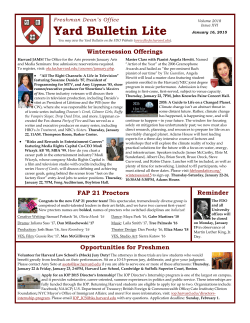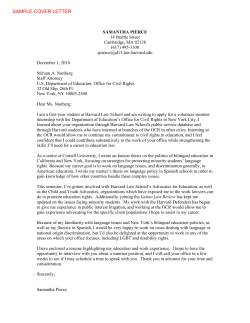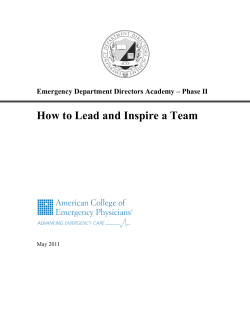
Document 28208
A prescription for better health: go alfresco - Harvard Health Publications MY ACCOUNT MY LIBRARY DICTIONARY HELP Shopping Cart (0 items for $0.00) Enter a Keyword to Search Home Health Newsletters Special Health Reports Health Books Browse By Topic Blog Text size: A AA Home » HEALTHbeat Archive » A prescription for better health: go alfresco Shop Our Bookstore Health Newsletters A prescription for better health: Go alfresco More information Harvard Health Letter Harvard Women's Health Watch Harvard Mental Health Letter Harvard Men's Health Watch Harvard Heart Letter Perspectives on Prostate Disease Premium Access Premium Access Plus Special Health Reports Exercise Lose Weight and Keep it Off Most of us spend the vast majority of our time inside. According to one government estimate, the average American spends 90% of his or her life indoors, and as we get older we become even more inclined not to venture out. But is all this indoor time hurting our health? The study results are ticking up: spending time outdoors seems to have discernible benefits for physical and mental health. Granted, some are merely by association and can be achieved by other means, perhaps while indoors, but often only with a good deal more trouble and expense. Here are five potential benefits of spending more time outdoors: 1. Your vitamin D levels will go up Low Back Pain Positive Psychology Strength and Power Training Vitamins and Minerals See All Titles » Health Books Eat, Drink, and Be Healthy Living Through Breast Cancer The Fertility Diet Family Health Guide Healing Your Sinuses See All Titles » Browse By Category Common Medical Conditions Emotional Well Being & Mental Health Heart & Circulatory Health Men's Health Wellness & Prevention Women's Health Exposing your skin to sunshine — actually, ultraviolet B (UVB) rays — enables the body to make vitamin D, which is why it’s also known as the “sunshine vitamin.” Research suggests vitamin D may have protective effects against everything from osteoporosis to cancer to depression to heart attacks and stroke. Of course, it has to be sunny out, and there are some snags. Where you live, the season, and the time of day affect how much UVB reaches your skin. The farther you live from the equator, the less UVB radiation you receive. Vitamin D production is affected by age (people ages 65 and over generate about a fourth as much as people in their 20s) and skin color (African Americans have, on average, about half the levels of vitamin D in their blood as white Americans). Another problem: sunscreens are most effective at blocking UVB light, the part of the spectrum that causes sunburn, but UVB also happens to be the kind of light that kick-starts the generation of vitamin D in the skin. The either-or of sunscreen and sunshine vitamin has stirred up a lot of controversy and debate between pro-sunscreen dermatologists and the vitamin D camp. But there is plenty of middle ground here: some limited sun exposure on short walks and the like, supplemented with vitamin D pills if necessary, and liberal use of sunscreen when you are out for extended periods, particularly during the middle of the day. Get your copy of Living Better, Living Longer: The secrets of healthy aging Age successfully! We designed Living Better, Living Longer to help you avoid or slow the onset and course of common health woes of aging, such as heart disease, stroke, Alzheimer's disease, and sight and hearing disorders. Its pages pose and answer many questions about aging. Click here to read more » 2. You’ll get more exercise (especially if you’re a child) Health Resources Current and Archived News Family Health Guide Online Guide to Diagnostic Tests HEALTHbeat Archive Medical Dictionary Being outside isn’t a guarantee of being active. Still, there’s no question that being outdoors is associated with activity and indoor living is associated with being sedentary, particularly for children. According to some surveys, American children spend an average of 6½ hours a day with electronic media (video games, television, and so on), time that is spent mainly indoors and sitting down. British researchers found that children are more than doubly active when they are outside. Adults can go to the gym. Many prefer the controlled environment there. But if you make getting outside a goal, that should mean less time in front of the television and computer and more time walking, biking, gardening, cleaning up the yard, and doing other things that put the body in motion. Newsweek Readers 3. You’ll be happier (especially if your exercise is ‘green’) Sign Up Now For Light tends to elevate people’s mood, and unless you live in a glass house or are using a light box to treat seasonal affective disorder, there’s usually more light available outside than in. Physical activity has been shown to relax and cheer people up, so if being outside replaces inactive pursuits with active ones, it might also mean more smiles and laughter. http://www.health.harvard.edu/healthbeat/a-prescription-for-better-health-go-alfresco[10/13/2010 6:20:10 AM] A prescription for better health: go alfresco - Harvard Health Publications HEALTHbeat Our FREE E-Newsletter Get weekly health information and advice from the experts at Harvard Medical School. Enter First Name (Optional) Enter E-mail Address Researchers at the University of Essex in England are advancing the notion that exercising in the presence of nature has added benefit, particularly for mental health. Their investigations into “green exercise,” as they are calling it, dovetail with research showing benefits from living in proximity to green, open spaces. 4. Your concentration will improve A study published in 2008 found that children with ADHD scored higher on a test of concentration after a walk through a park than after a walk through a residential neighborhood or downtown area. Other ADHD studies have also suggested that outdoor exercise could have positive effects on the condition. Truth be told, this research has been done in children, so it’s a stretch to say it applies to adults, even those who have an ADHD diagnosis. But if you have trouble concentrating — as many do — you might see if some outdoor activity, the greener the better, helps. 5. You may heal faster University of Pittsburgh researchers reported in 2005 that spinal surgery patients experienced less pain and stress and took fewer pain medications during their recoveries if they were exposed to natural light. An older study showed that the view out the window (trees vs. a brick wall) had an effect on patient recovery. Of course, windows and views are different than actually being outside, but we’re betting that adding a little fresh air to the equation couldn’t hurt and might help. Recommend You recommend this. Undo · Add Comment · Admin Page · Error You recommend this.Be the first of your friends to recommend this. Undo · Add Comment · Admin Page · Error Print Article Can you give me some advice about omega-3s? More information Q. I am confused about omega-3 fats. Are the different types equally good for you? A. There are three main types of omega-3s to keep track of. The first two — eicosapentaenoic acid (EPA) and docosahexaenoic acid (DHA) — are found mainly in fish, so they’re sometimes called marine omega-3s. The third is alpha-linolenic acid (or ALA, found in plantbased foods, such as flaxseed, walnuts, and canola and soybean oils). So far, the evidence for the marine omega-3s (EPA and DHA) having health benefits is more extensive than for the plant-based ALA. Studies have shown that EPA and DHA offer some measure of protection against heart attacks and strokes. EPA and DHA also have anti-inflammatory effects that may be useful in preventing or treating conditions like rheumatoid arthritis and inflammatory bowel disease. Some well-designed studies of ALA are under way, but right now there just aren’t enough data to be confident about ALA having the same effects as the marine-based omega-3s. If you’re aiming to increase your omega-3 intake to accomplish all the things that omega-3s are thought to do, increasing the amount of fish you eat is probably the best way to go. That said, flaxseed and the other ALA-rich oils may still be a healthful choice, if you are using them to replace trans or saturated fat. The American Heart Association recommends that adults eat two servings of omega-3-rich fish (salmon, for example) per week, which works out to about 400 to 500 milligrams (mg) of EPA and DHA per day. People with heart disease are advised to double that, so their daily intake is 1,000 mg, or a full gram. Taking fish oil capsules is often the most practical way to get that amount of omega-3s. If you choose to take fish oil capsules, note that the amount of EPA and DHA provided is often only about a third of that listed on the front of the bottle. Check the Nutrition Facts label on the back for the actual amount. — JoAnn Manson, M.D., Dr.P.H. Brigham and Women’s Hospital http://www.health.harvard.edu/healthbeat/a-prescription-for-better-health-go-alfresco[10/13/2010 6:20:10 AM] Get your copy of Healthy Eating for a Healthy Heart What you eat makes all the difference when it comes to keeping your heart pumping and your arteries running clear. Healthy Eating for a Healthy Heart explains the latest news in cardiovascular health in easy-to-understand language and offers recipes and eating plans to guide your daily diet. This report helps sort through the hype about weight loss and makes eating a heart-healthy diet a pleasure. Click here to read more » A prescription for better health: go alfresco - Harvard Health Publications Our Company Contact Us E-mail The Editor Corporate Sales About Us Customer Service Special Health Reports Permissions Our Blog Change address Harvard Health Letter Licensing Privacy Policy Pay bill Bulk Sales Follow us on Twitter Renew subscription Harvard Women's Health Watch Become a Fan on Facebook Check expiration date Order a gift subscription Missing Issues Media Inquiries Harvard Men's Health Watch Harvard Mental Health Letter Harvard Heart Letter Technical Support Help © 2000-2010 Harvard University. All rights reserved. Site Map http://www.health.harvard.edu/healthbeat/a-prescription-for-better-health-go-alfresco[10/13/2010 6:20:10 AM]
© Copyright 2025





















